Gravitational waves have been detected for the first time, overjoyed scientists have announced, confirming something Albert Einstein had predicted one hundred years ago. In the world of science, this discovery is a momentous milestone – history in the making. Professor Stephen Hawking said the discovery is an ‘incredible achievement’.
By observing gravitational waves – ripples in the fabric of spacetime – arriving at our planet from a cataclysmic event in the far distant Universe, we have now made a mega leap in our understanding of the nature of gravity and ushered in a new and fascinating era of astronomy.
Gravitational waves were a major prediction in Albert Einstein’s 1915 General Theory of Relativity, and their discovery opens an extraordinary new window onto the cosmos.
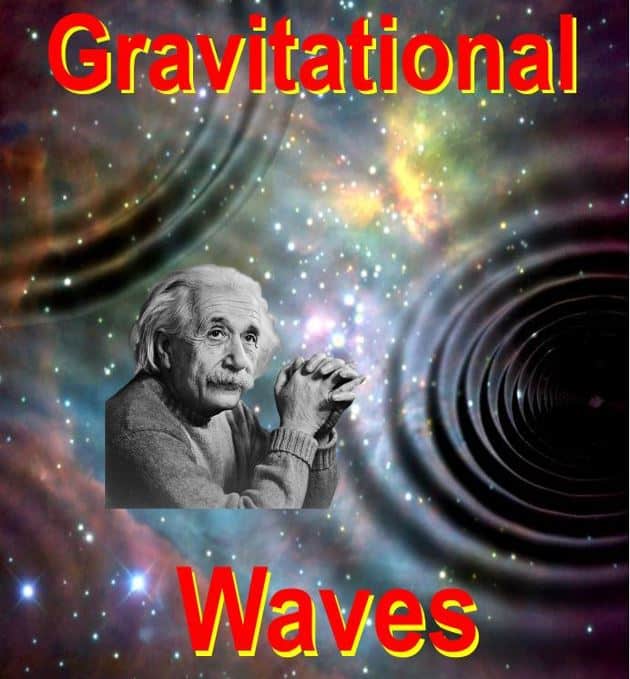 One hundred years after Albert Einstein predicted the existence of gravitational waves, they have finally been detected. (Image: personal.soton.ac.uk)
One hundred years after Albert Einstein predicted the existence of gravitational waves, they have finally been detected. (Image: personal.soton.ac.uk)
Gravitational waves change how we see the Universe
With gravitational waves, we have access to data regarding their dramatic origins and the characteristics of nature that could not otherwise be obtained.
Scientists at LIGO (Laser Interferometer Gravitational-Wave Observatory) at the California Institute of Technology have concluded that the gravitational waves they detected were produced during the final fraction of a second when two black holes merged to create a single, more massive spinning black hole.
This type of collision of two black holes had been predicted, but until now nobody had managed to observe the event.
The gravitational waves were detected on 14th September, 2015, at 5:41am Eastern Daylight Time by both of the LIGO detectors, located at Hanford Washington and Livingston, Louisiana.
Since September, excited scientists have known that something was detected. However, it took several months of checking to confirm that they really were gravitational waves.
Incredibly huge energy burst produced when black holes collided
Based on the data they analyzed, physicists estimate that the two black holes that merged were approximately 29 and 36 times the mass of the Sun. The event occurred 1.3 billion years ago. Around three times the mass of the Sun was converted into gravitational waves in a fraction of a second – they reached a peak power output approximately 50 times that of the whole observable Universe.
The Livingston detector recorded the event seven milliseconds before the Hanford one did, which scientists say means the source was located in the Southern Hemisphere.
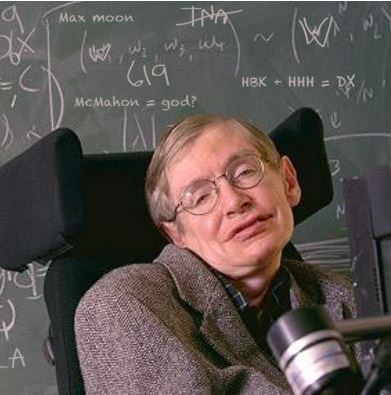 Prof. Stephen Hawking, who described the latest discovery as an ‘incredible achievement’, believes this is the first of many exciting findings to come. He says the properties discovered are consistent with the predictions he made in Cambridge in the 1970s. (Image: hawking.org.uk)
Prof. Stephen Hawking, who described the latest discovery as an ‘incredible achievement’, believes this is the first of many exciting findings to come. He says the properties discovered are consistent with the predictions he made in Cambridge in the 1970s. (Image: hawking.org.uk)
General relativity says that two black holes orbiting each other lose energy through the emissions of gravitational waves. This causes them to gradually get nearer to each other over a period of billions of years. Their approach speeds up over time and is considerably faster during the final minutes.
During the last fraction of a second, the pair of black holes crash into each other at almost half the speed of light and form a single much larger black hole, converting a proportion of the merged black holes’ mass into energy, according to Einstein’s formula E=mc2.
Gravitational waves come from two black holes colliding
This energy is released as a final powerful burst of gravitational waves. These are the waves that LIGO has observed.
American astrophysicist Joseph Taylor, Jr. and colleagues first demonstrated gravitational waves in the 1970s and 80s. In 1974, Taylor and American physicist Russel Hulse discovered a binary system composed of a neutron star and a pulsar orbiting it.
In 1982, Taylor and Joel M. Weisberg discovered that the pulsar’s orbit was gradually shrinking because of the release of energy in the form of gravitational waves. Taylor and Hulse were awarded the Nobel Prize in Physics in 1993 for discovering the pulsar and demonstrating that it would make possible this particular gravitational wave.
David H. Reitze, executive director of the LIGO Laboratory, said:
“Our observation of gravitational waves accomplishes an ambitious goal set out over 5 decades ago to directly detect this elusive phenomenon and better understand the Universe, and, fittingly, fulfills Einstein’s legacy on the 100th anniversary of his general theory of relativity.”
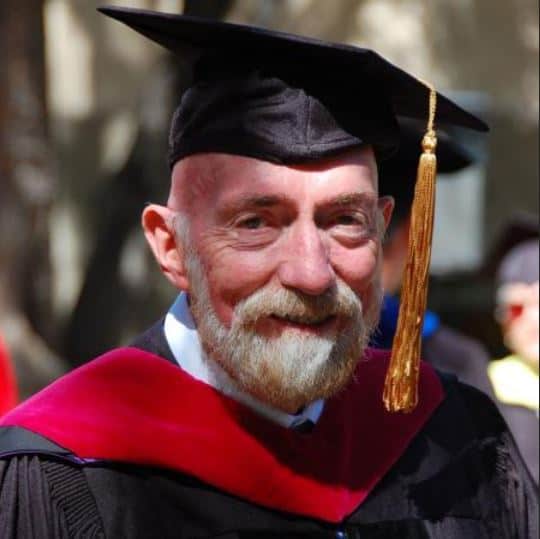 Kip Thorne, who was the Feynman Professor of Theoretical Physics at Caltech until 2009, once said: “Gravitational waves will bring us exquisitely accurate maps of black holes – maps of their space-time. Those maps will make it crystal clear whether or not what we’re dealing with are black holes as described by general relativity.” (Image: Caltech)
Kip Thorne, who was the Feynman Professor of Theoretical Physics at Caltech until 2009, once said: “Gravitational waves will bring us exquisitely accurate maps of black holes – maps of their space-time. Those maps will make it crystal clear whether or not what we’re dealing with are black holes as described by general relativity.” (Image: Caltech)
LIGO upgrade made detection possible
LIGO scientists say the discovery was made possible thanks to a major upgrade that increased the instruments’ sensitivity. They can now probe a considerably greater volume of the Universe.
France Córdova, Director of the National Science Foundation, said:
“In 1992, when LIGO’s initial funding was approved, it represented the biggest investment the NSF had ever made. It was a big risk. But the National Science Foundation is the agency that takes these kinds of risks.
“We support fundamental science and engineering at a point in the road to discovery where that path is anything but clear. We fund trailblazers. It’s why the U.S. continues to be a global leader in advancing knowledge.”
LIGO research is performed by the LSC (LIGO Scientific Collaboration), which consists of over 1,000 scientists from universities across the USA plus 14 other nations.
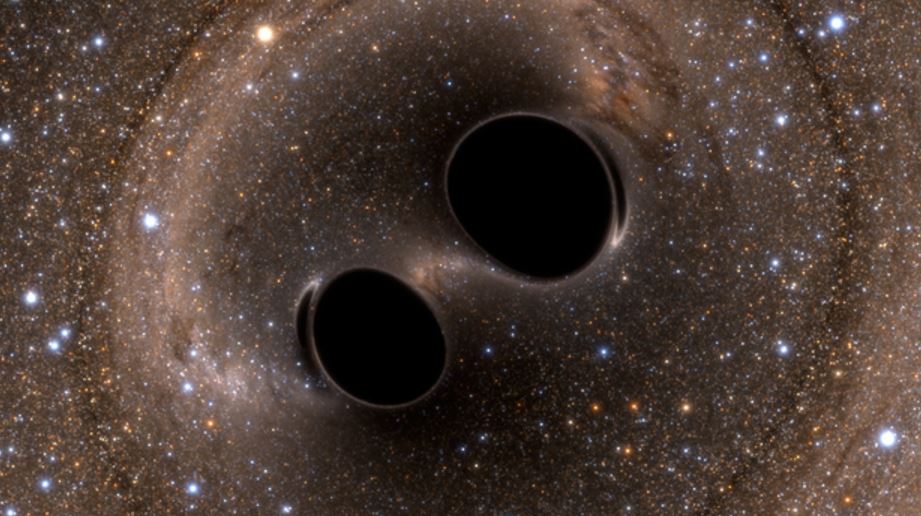 The gravitational waves that were detected were the result of two black holes colliding. According to NASA: “A passing gravitational wave squishes and stretches – squishes and stretches space itself and anything in it. (Image: ligo.caltech.edu)
The gravitational waves that were detected were the result of two black holes colliding. According to NASA: “A passing gravitational wave squishes and stretches – squishes and stretches space itself and anything in it. (Image: ligo.caltech.edu)
LSC spokesperson, Gabriela González, professor of physics and astronomy at Louisiana State University, said:
“This detection is the beginning of a new era: The field of gravitational wave astronomy is now a reality.”
The GEO collaboration
The GEO collaboration, which forms part of the LSC, includes universities in the Germany and the UK. The GEO600 gravitational-wave detector was designed and is operated by collaboration scientists near Hannover, Germany.
It is used as a think-tank and test-bed for advanced detector techniques. Much of the technology that contributed to the ultra-sensitivity of Advanced LIGO and enabled the detection of gravitational waves has been developed and tested within the GEO collaboration.
Prof. Karsten Danzmann, director at the Max Planck Institute for Gravitational Physics in Hannover and director of the Institute for Gravitational Physics at Leibniz Universität Hannover, said:
“Scientists have been looking for gravitational waves for decades, but we’ve only now been able to achieve the incredibly precise technologies needed to pick up these very, very faint echoes from across the Universe.”
“This discovery would not have been possible without the efforts and the technologies developed by the Max Planck, Leibniz Universität, and UK scientists working in the GEO collaboration.”
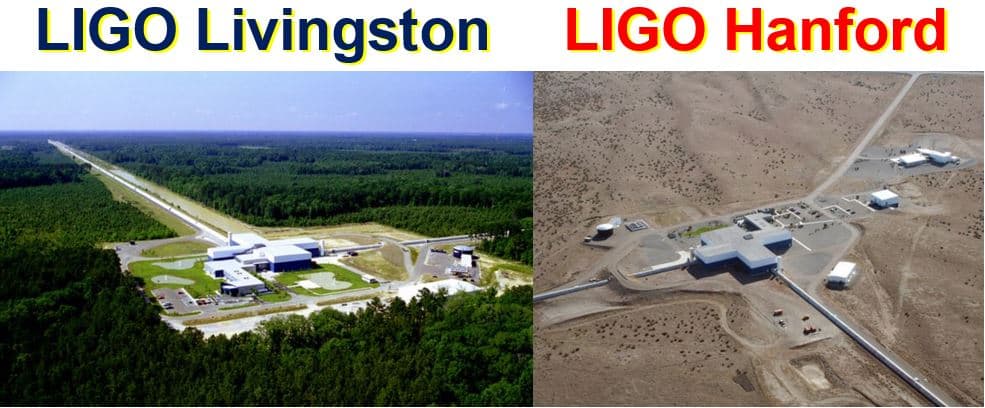 LIGO Laboratory operates two detector sites 1,800 miles (3,000 km) apart: one near Livingston, Louisiana, and another near Hanford in eastern Washington. (Images from caltech: Livingston and Hanford)
LIGO Laboratory operates two detector sites 1,800 miles (3,000 km) apart: one near Livingston, Louisiana, and another near Hanford in eastern Washington. (Images from caltech: Livingston and Hanford)
Professor Stephen Hawking, the Dennis Stanton Avery and Sally Tsui Wong-Avery Director of Research at the Department of Applied Mathematics and Theoretical Physics at the University of Cambridge.
“The discovery of gravitational waves by the LIGO team is an incredible achievement. It is the first observation of gravitational waves as predicted by Einstein and will allow us new insights into our universe.”
“The gravitational waves were released from the collision of two black holes, the properties of which are consistent with predictions I made in Cambridge in the 1970s, such as the black hole area and uniqueness theorems. We can expect this observation to be the first of many as LIGO sensitivity increases, keeping us all busy with many further surprises.”
Ramping up Advanced LIGO detectors
Over coming years, the Advanced LIGO detectors will be ramped up to capacity (full power), thus increasing their ability to sense gravitational waves – even more distant events will be measured.
Further detectors will be added to the international collaboration, first in Italy and later in several other locations across the world. This detection is the first of many to come, scientists say.
Jo Johnson MP, the UK Minister for Universities and Science, said:
“Einstein’s theories from over a century ago are still helping us to understand our universe. Now that we have the technological capability to test his theories with the LIGO detectors his scientific brilliance becomes all the more apparent.”
“The Government is increasing support for international research collaborations, and these scientists from across the UK have played a vital part in this discovery.”
Video – Gravitational waves detected by LIGO sensors
Following a several decades-long search, LIGO Laboratories has detected gravitational waves, opening a new era in our exploration of the Universe.
